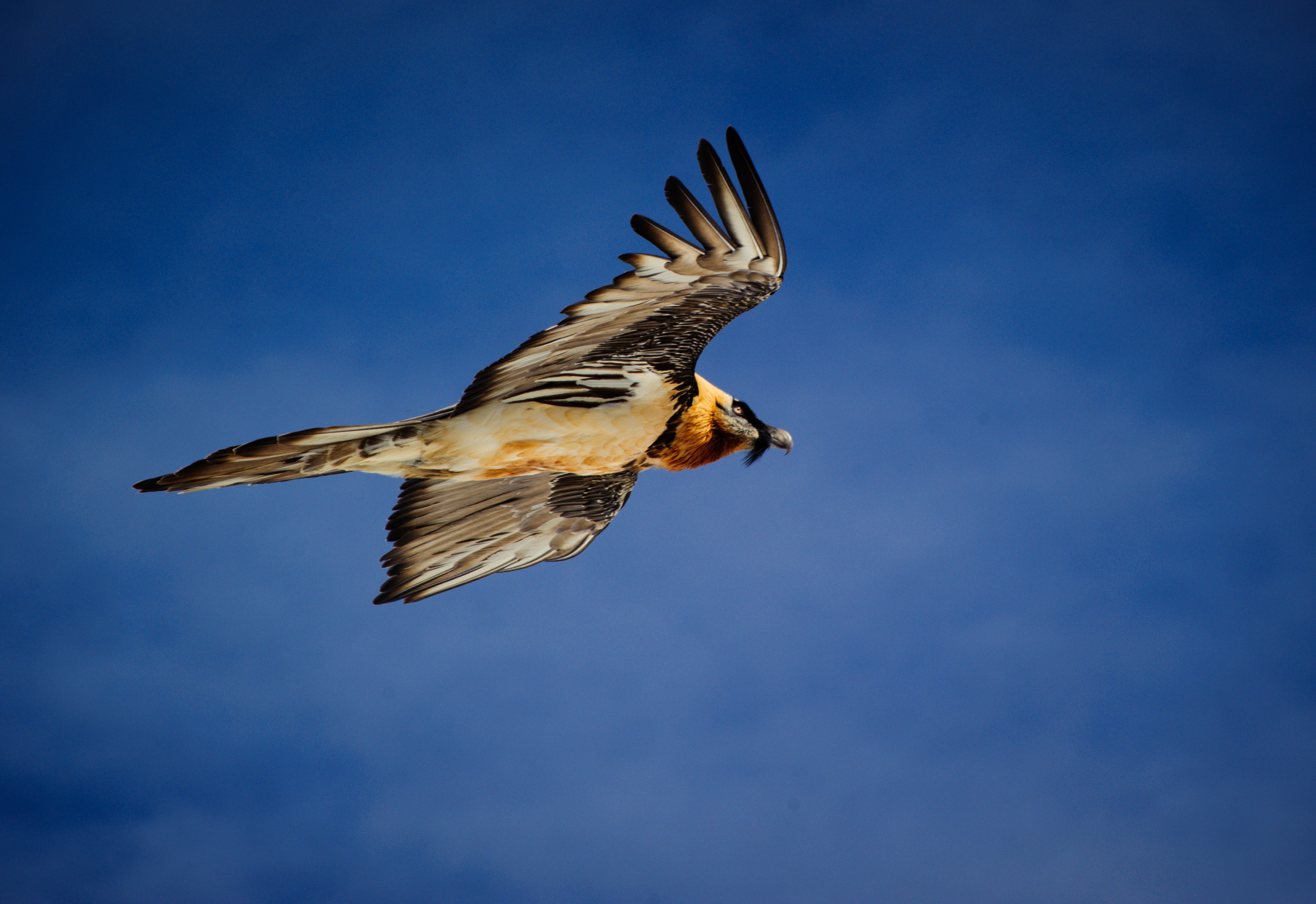
Giant animals are hard to miss. While scientists continue to discover new species each year, the vast majority of these creatures are small, cryptic, and often inhabit remote or inhospitable places. Still, some enormous animals have managed to elude mainstream attention. Take a look at these 10 massive species you may never have heard of before.
10. Gaur

The gaur (Bos gaurus) is the largest bovine in the world. Native to South Asia and Southeast Asia, guar inhabit moist deciduous and evergreen forests. Due to their immense size, gaur have very few natural enemies, but 1,000kg adults have rarely been observed falling prey to tigers. That’s a lot of beef!
9. Bearded Vulture

Europe’s largest raptor species is also one of its strangest. The bearded vulture (Gypaetus barbatus) has a specialised diet of bone marrow, which it extracts from the limbs of dead animals by carrying them to great heights and dropping them onto the rocks below. Bearded vultures also have the peculiar habit of smearing their feathers with iron-rich soils, producing an intense orange colouration that is considered a mark of status among vultures.
8. Asian Giant Hornet

A charismatic species for all the wrong reasons, the Asian giant hornet (Vespa mandarinia) is the largest wasp in the world. With a body length of 45mm and a stinger up to 6mm long, this species is physically imposing, but its true notoriety lies in its sting. The venom of the Asian giant hornet contains a neurotoxin that can be lethal in high doses, even to people who aren’t allergic.
7. Lion’s Mane Jellyfish

Found in frigid arctic and boreal waters worldwide, the lion’s mane jellyfish (Cyanea capillata) is enormous. With a bell length over two metres and trailing stinging tentacles up to 30m long, this species is one of the longest animals on Earth. Lion’s mane jellyfish are frequent visitors to the English Channel and Irish Sea.
6. Giant Anteater

The giant anteater (Myrmecophaga tridactyla) is the largest member of the anteater family, and has the most dramatic appearance. With a total body length of more than two metres, this species lives up to its name, spending its time foraging for ants and termites with its 60 cm tongue. Giant anteaters range throughout Central and South America, and are considered vulnerable to extinction due to habitat destruction and poaching for bush meat.
5. Giant Clam

The giant clam (Tridacna gigas) can grow to cartoonish size, with possible shell lengths of more than 135cm, and recorded weights up to 250kg. Found in shallow coral reef habitats throughout the Indian and South Pacific Ocean, this species can live more than a century. The clam’s brightly coloured mantle contains zooxanthellae, which produce nutrition for the bivalve when exposed to sunlight.
4. Antelope Jackrabbit

The antelope jackrabbit (Lepus alleni) is the world’s largest species of hare. Found throughout the North American Southwest, the jackrabbit’s trademark massive ears are an adaptation to the hot desert climate, allowing it to rapidly shed heat into the air through huge networks of tiny blood vessels.
3. Coconut Crab

Also known as the robber crab, the coconut crab (Birgus latro) is a giant species of hermit crab, found on sandy coastlines and islands of the Indian Ocean and western South Pacific. The coconut crab is the largest land-dwelling arthropod on Earth, growing to a whopping 92cm in length. As its name suggests, this species eats mainly coconuts and, amazingly, can live up to 60 years.
2. Kori Bustard

The kori bustard (Ardeotis kori) is the world’s largest flying bird, with a wingspan that can exceed 270cm and a weight of up to 20kg. This massive species is native to savanna habitats across sub-Saharan Africa, where it eats a steady diet of insects, reptiles and small mammals while walking slowly through the grasslands.
1. Chinese Giant Salamander

The Chinese giant salamander (Andrias davidianus) is the planet’s largest amphibian, with the potential to reach lengths exceeding 170 cm. Once found in streams and rivers throughout mountainous areas of China, this species is now critically endangered, due to the combined effects of pollution, habitat loss, and over-collection for use in traditional medicines. [geoip-content not_country=”CA”]

 In the Realm of the Giants—Mysterious Cephalopods
In the Realm of the Giants—Mysterious Cephalopods